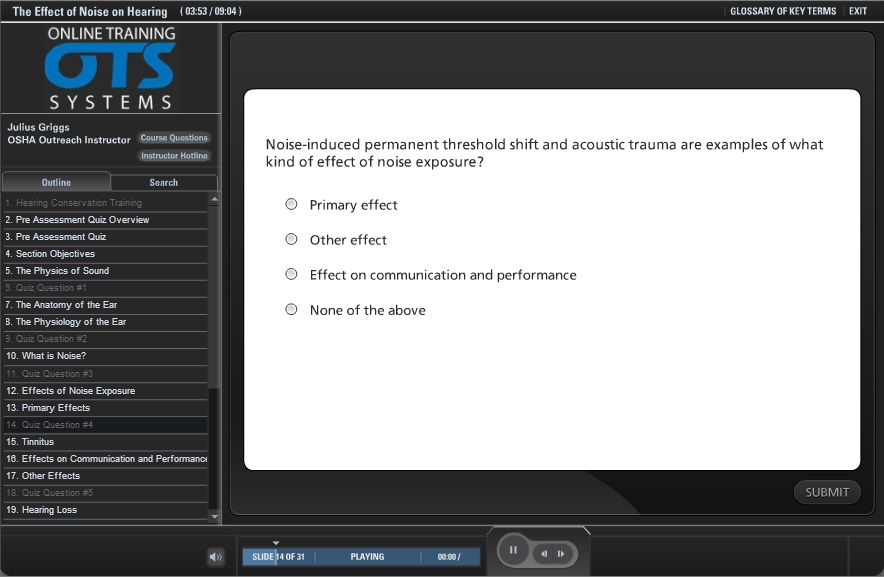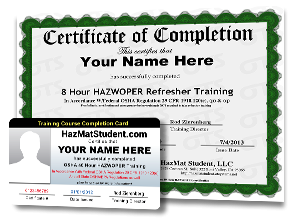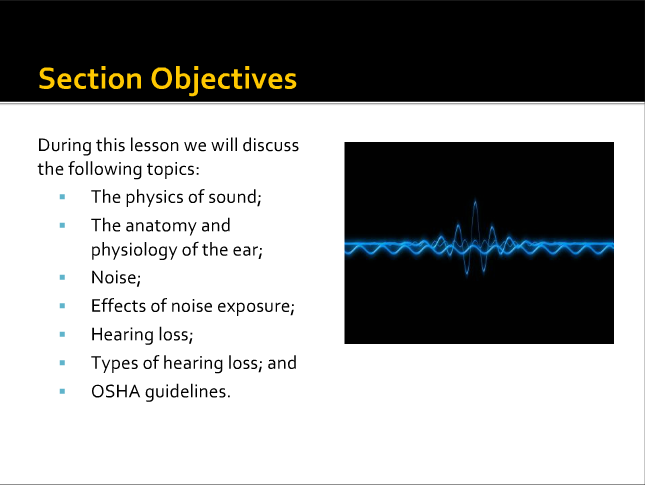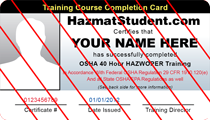Who Should Take This Course?
The online OSHA Hearing Conservation Training course should be taken by employees who are subject to hazardous noise exposure at work. The course is designed to help employers and workers meet the Federal and State OSHA Hearing Conservation requirement outlined in OSHA regulations. Course topics include: OSHA standards and guidelines; Effects of noise exposure; Hearing protection devices (HPDs) – Selection, fit, use and care; Audiometric testing and employee monitoring; and more.
Per 29 CFR 1910.95(k)(1):
The employer shall train each employee who is exposed to noise at or above an 8-hour time weighted average of 85 decibels in accordance with the requirements of this section. The employer shall institute a training program and ensure employee participation in the program.
Per 29 CFR 1910.95(k)(2):
The training program shall be repeated annually for each employee included in the hearing conservation program. Information provided in the training program shall be updated to be consistent with changes in protective equipment and work processes.
For information on OSHA Safety training requirements or the Safety training courses we offer, visit our OSHA Safety Training page. This course should be used as a training tool within a comprehensive hearing conservation program designed for employees.







